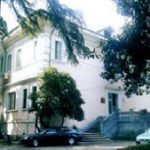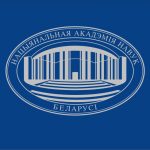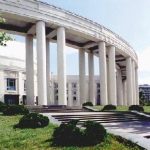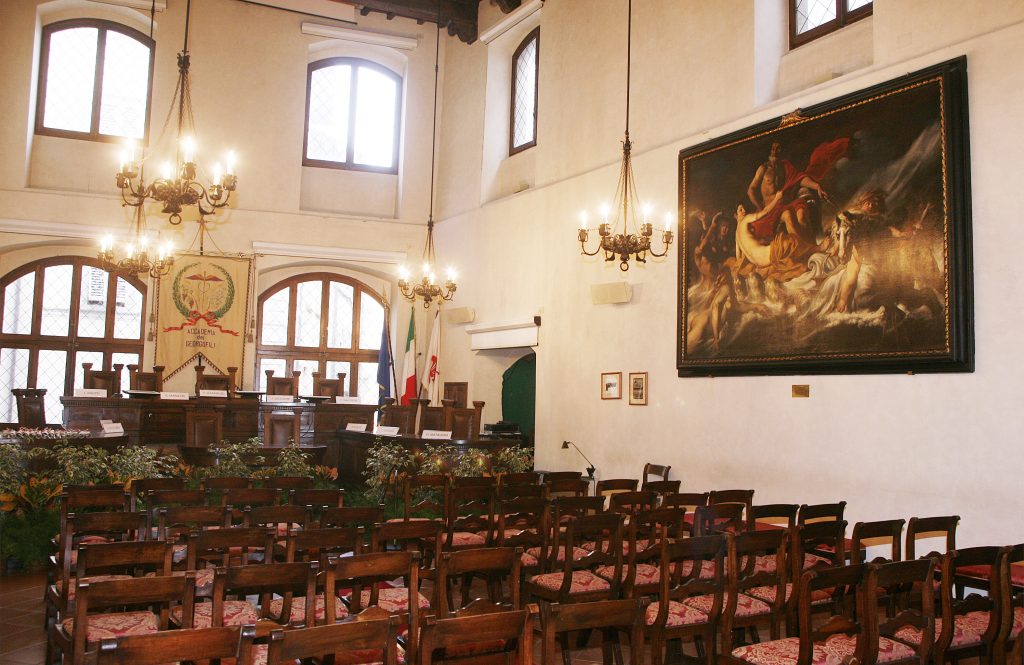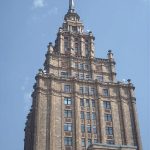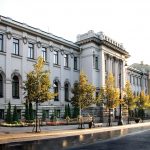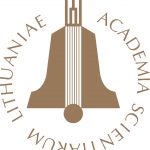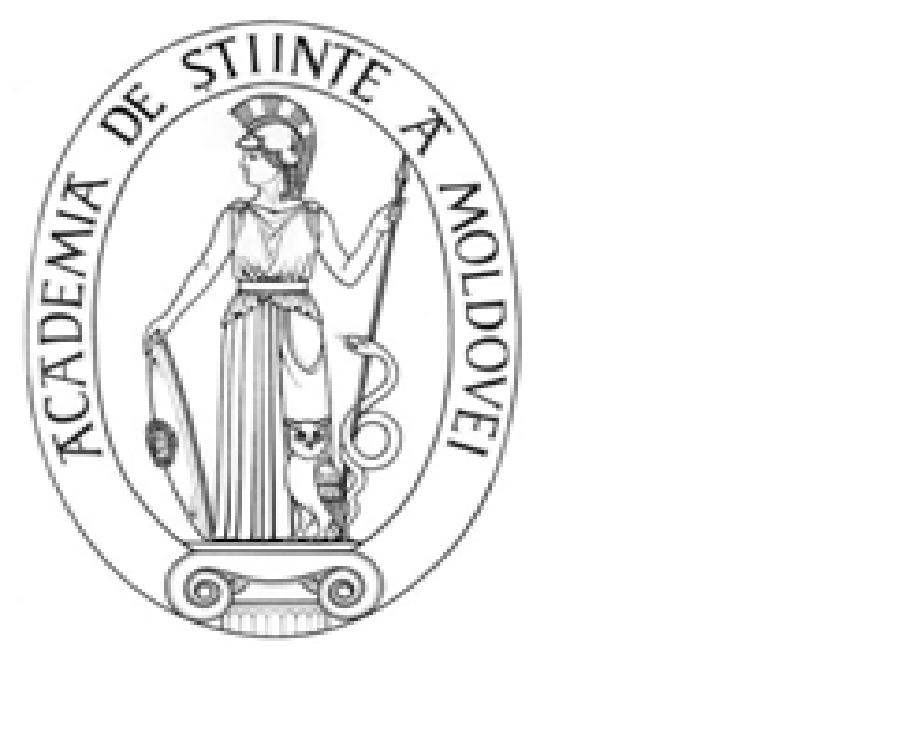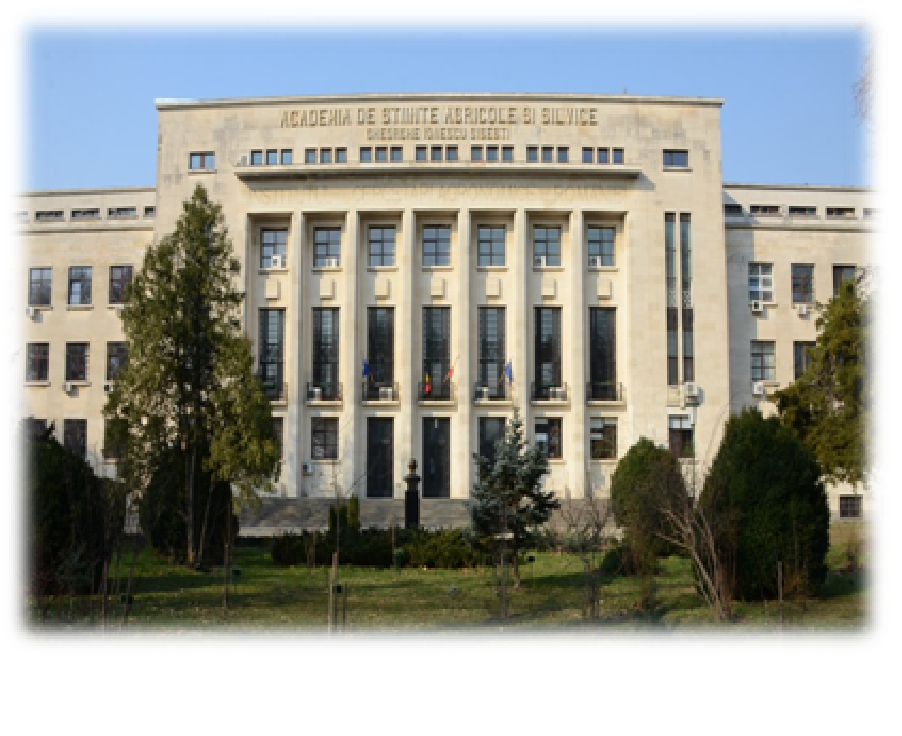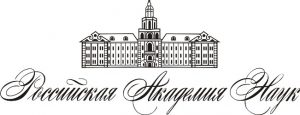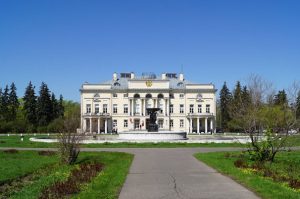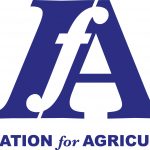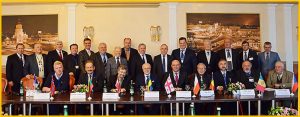
In 1779, Portugal aligning itself with the dynamics of structuring and disseminating science with different European countries sees the Royal Academy of Sciences of Lisbon created by Queen D. Maria I. It was the birth of an enlightened proposal where archaism gave way to modernity, handicrafts gave way to technology. Since then the Lisbon Academy of Sciences, became an institution for the promotion of science and the dissemination of scientific knowledge. The newly created Academy adopts the maxim of Fedro Nisi utile est quod facimus stulta est gloria, that is, if what we do is not useful the glory is in vain, an idea present in Vandelli who defended that the Academy to be created should be dedicated to Sciences and its applications. It was not a merely conventional contribution with the simple aim of following the cultural progress of the time, but a conscious and active intervention in national life, seeking to interest and enthuse Portuguese mentalities in the execution of a program to elevate the country within the scope of the sciences and techniques. It was made up of the Natural Sciences, Exact Sciences and Fine-Arts Classes, with effective and correspondent members, in addition to foreign correspondents.
Among the initial members several renowned foreign scientists, namely Carl von Linné (son), Carlo Allione, Casimiro Ortega, Christian Früs Rottböll, Giovanni António Scopoli, Hupsch-Lonzen, Jacob Christian Schaeffer and Johan Christian Daniel Schreber have to be mentioned.
Present
The Lisbon Academy of Sciences is an Institution of public interest, installed in the Convento de Jesus, which construction began in the 17th century and survived to 1755 earthquake.
Mission, Vision and Objectives
Under statutory terms, it is incumbent upon the Lisbon Science Academy to: (1) promote scientific research and disseminate its results; (2) promote the study of the History of Portugal and its relations with other nations; (3) promote the enrichment of thought, literature, language and other sources of national science and culture; (4) contribute to the progress of science and culture in the country; (5) provide the Portuguese Government with consultancy on linguistic and scientific matters of national interest, coordinating its action with the network of European and world academies, with special attention to those of Portuguese-speaking countries; (6) contribute to the information, knowledge and wisdom society with a view to enhance Portuguese participation in globalism.
The Lisbon Academy of Sciences is now constituted of two classes (Sciences; Letters and Humanities). Each Class is constituted by 5 effective members per section and 10 correspondents per section (7) each one corresponding to a scientific area in a total of 105 per Class, which means a total of 210 members (effective and correspondents). It has also Emeritus and Honorary members. Renowned scientists in the different scientific domains from all over the world constitute an important number of foreign correspondent members.
The two classes have scientific meetings every week at Thursday. The abstracts (Portuguese and English versions) of the presentations are published in the website (www.acad-ciencias.pt) and the texts are published in the Memórias da Academia das Ciências de Lisboa also available as books or in the web page (Academia digital).
The Sciences Academy of Lisbon integrates: (1) The Institute for High Studies; (2) The Institute of Lexicology and Lexicography of the Portuguese language; (3) The Library; (4) The Maynense Museum.
The Institute of High Studies
It’s main mission is to promote the transmission of scientific knowledge and culture through conferences authored by high standard scientists giving the participants the opportunity to be informed of the new and current scientific developments in the different fields of knowledge, enabling the helder to continue learning along life. In this Institute, emerged the Permanent Seminar for Young Scientists (SJC) an institution similar to the Young Academies.
The Institute of Lexicology and Lexicography of the Portuguese Language
This Institute is responsible for creation, promotion and support of research centers activity necessary for the defense and enrichment of the Portuguese lexicon as well as and the organization of meetings, within the areas of lexicology and lexicography of the Portuguese language.
This national property preserves not only the wealth per se, but also the extraordinary patrimonial wealth of its noble hall, former library of the Convent, which ceiling is decorated with paintings attributed to Pedro Alexandrino de Carvalho.
The Library
It is rich in works of scientific character, for example, of Kepler, Newton, Linné, Buffon, and many other authors of nominee. They were used, especially to support the teaching activities practiced at the Aula Maynense during the monastery time and after. Others include Philosophy, Theology, incunabula, manuscripts, periodicals, etc. The so-called Red Series (from the Convent) and Blue Series are prominent. In addition to Portuguese documentation, many other origins are represented, of which, due to the growing interest in our days, Islamic and Chinese nuclei are worthy of note, along with works from Spain and other European countries. One of the oldest pieces is a scroll from the beginning of the century. XII with a donation from Queen D. Teresa and her son, D. Afonso Henriques. Several date from the 19th century. XIV, but there are many more recent ones. Among the heritage of exceptional value, which preservation and protection is the first priority, there is the sumptuous copy, ordered by D. Duarte, reigning D. João I, of CHRONICA GERAL DE HESPANHA DE 1344; the BOOK OF HOURS of the Countess of Bretiandos, (first half of the century XVI); the MISSAL by Estêvão Gonçalves Netto (1610-ca.1620), a masterpiece of Portuguese illumination; the BOOK OF ARMADAS, an eloquent testimony of Portuguese navigations, their successes and dramas; the famous ATLAS DE FERNÃO VAZ DOURADO, also from the 19th century, (perhaps the first to appear in Japan). It includes around 3000 Portuguese, Arab, Spanish and Hebrew manuscripts and an invaluable collection of books by the secs. XIV, XV, XVI, XVII and one of the most complete collections of periodicals from all over the world in the areas of Sciences and Humanities.
The Maynense Museum
This museum has its origins in the Monastery. Their activities aim at: (1) the conservation and study of its collections; (2) the promotion and dissemination of the Academy’s museological heritage (Virtual exhibitions can be followed at : https://www.galeria-arf-acad-ciencias.pt/. and https://prezi.com/view/PBHI4groFgqKgOuVFQB4/.) ; (3) the attendance of visitors and conduction of guided tours.
Among the collections belonging to the Museum, we can mention: a) Pinacoteca of the monastery and other, including an excellent set of pictures from notable friars from the Convent of Jesus. Others include the portrait of king Jorge III of England offered in 1810 to the Academy by one of his sons; b) Statuary: busts of Alexander the Great and Roman Emperors, the bust of D. João de Bragança, 2nd Duke of Lafões and 1st President of the Academy, signed by Machado de Castro; c) Relics of the Convent of Jesus, gifts from D. Pedro III; d) Ethnographic and other material: with emphasis to the collection from the expedition of Alexandre Rodrigues Ferreira in Brazil (1783-1792); – the collection, from British Columbia and Hawaii, obtained in the 3rd and last expedition of James Cook and transferred to the Academy thanks to Sir Joseph Banks (President of the Royal Society and Member of our Academy) and to his friend the abbot Correa da Serra; Valuable set of ceramics from Peru, from the Chimú and Lambayeque Cultures, offered by the Count of S. Januário in the 19th century to the Royal Academy of Sciences; Other important materials include ceramics from India and Chinae) Remains of zoological, botanical / xylological, paleontological, mineralogical, archaeological collections. Notable scientists, namely father Jiao de Flourier (pioneer I palaeontology and renown botanist), Jiao da Sylva Feijó, both members of the Academy, the Baron Wilhelm von Eschwege Alexandre António Vandelli; Collections of Physics instruments (with some Chemistry equipment) highlighting a precious set from the 19th century, including specimens from renown manufacturers in Paris and London. The Excavation collection, also included in Museum’s collection contains human and animal remains of the 1755 Earthquake.
Lisbon, may 2021

KSLA – a meeting place for the green sector
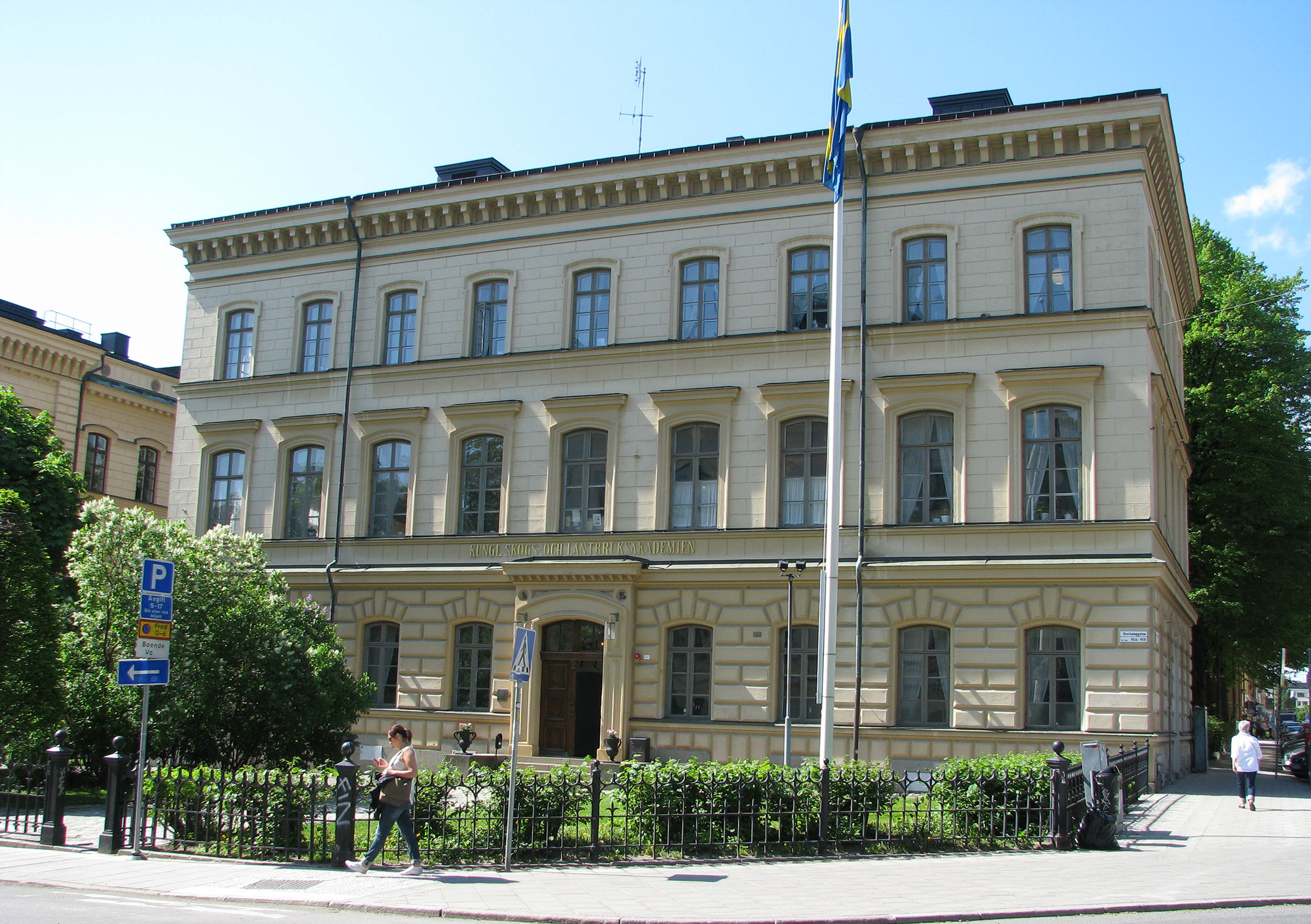
The task of the Royal Swedish Academy of Agriculture and Forestry (KSLA) is to promote agriculture and forestry and their related fields with the support of science and practical experience and in the benefit of society.
The Academy is a free and independent network organization working with issues relating to agriculture, horticulture, food, forestry and forest products, fishing, hunting and aquaculture, the environment and natural resources, and with agricultural and forest history. We work with issues that concern all and interest many!
President of The Royal Swedish Academy of Agriculture and Forestry is Jan Fryk, former CEO of the Swedish Institute for Forestry Research.
Vice President of The Royal Swedish Academy of Agriculture and Forestry is Lena Ingvarsson former Director of Legal Affairs at the Swedish Ministry of Environment and Energy.
The Academy of Sciences of Albania (ASA)
09/23/2016
The National Academy of Sciences carries out the organization, conduction and coordination of the state of scientific expertise, pursues common state policy, coordination and state regulation of activities of organizations in the exploration and use of outer space for peaceful purposes, serves as an umbrella organization of Belarus on scientific and methodological support of informatization development, and also carries out, accordingly to the Law of the Republic of Belarus “On the National Academy of Sciences of Belarus” and the Statute of the National Academy of Sciences of Belarus, some functions of a republican body of state management in the field of science.
Founded in October 1928 and officially inaugurated on January 1, 1929 under the name of The Belarusian Academy of Sciences, the National Academy of Sciences of Belarus is the guiding research center of Belarus, which unites the highly-skilled scientists of different specialties and dozens of research, scientific-production, design and inculcation organizations. The staff of the Academy of Sciences includes more than 18,000 researchers, technicians and supporting personnel whose average age is under 48 years old. There are about 5,870 Researchers, 482 Doctors of Sciences and 1,822 Candidates of Sciences (equivalent to Ph.D.), 247 Professors and 506 Associate Professors among them.
09/23/2016
After the proclamation of Bosnia and Herzegovina as an independent state (in 1992), the Academy of Sciences and Arts of Bosnia and Herzegovina became the national academy. Thus far the Academy has renewed or established cooperation with a number of foreign academies and international institutions.
09/30/2016
The Academy has published the following dictionaries: Mažuranić’s Prinosi za hrvatski pravno-povijesni rječnik (Contributions for a Croatian Historical Dictionary, 11 volumes), Benešić’s Rječnik hrvatskog književnog jezika od preporoda do l. G. Kovačića (Dictionary of the Croatian Literary Language from the National Revival to I. G. Kovačić, in 12 volumes), and Rječnik hrvatskoga kajkavskog književnog jezika (Dictionary of Croatian Literary Kajkavian, 10 volumes). The work on the large Rječnik hrvatskog ili srpskog jezika (Dictionary of the Croatian or Serbian Language, 97 volumes) went on for almost one hundred years.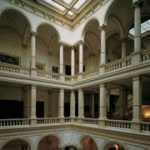 09/29/2016
09/29/2016
- Its role as scientific advisory body to the Minister of Agriculture of CR is fulfilled by forming strategies, structure and setting out priorities of agricultural research, preparation of materials, developing and evaluation of agricultural research programs and public tenders. This role is exclusive to the CAAS. Besides this task the CAAS fulfils other tasks according to the requests of the Minister of Agriculture.
- Activities in international scientific co-operation in European and global contexts.
- Ensuring the understanding and popularization of agricultural science and agricultural science and research activities in the fields and contributes to the implementation of the results.
- CAAS is responsible for the professional supervision and scientific content of agricultural scientific journals issued in co-operation with the CAAS.
05/11/2016
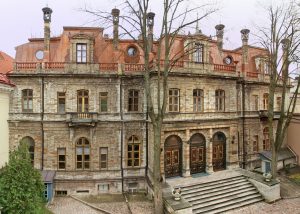
The Academy organises public academic lectures and scientific conferences; confers awards, monetary prizes, memorial medals; acts as an umbrella organisation for various non-governmental councils, committees, associated scientific societies and national contact points. It supports research cooperation and mobility: operates a scientific exchange programme built on 32 bilateral agreements with partner academies, serves as an EURAXESS Bridgehead Organisation and an academic partner for Lindau Nobel Laureate Meetings.
The Estonian Academy of Sciences is organised into four divisions: astronomy and physics; informatics and engineering; biology, geology and chemistry; humanities and social sciences. Number of members as of 1st April 2016: 78 plus 21 foreign members. Publications include the Year Book (also in English), two series of books in Estonian: National Prizes and Scientific Thought in Estonia, seven internationally peer-reviewed scientific journals, etc. Electronic versions are available at www.akadeemia.ee.
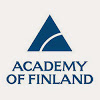

We work to contribute to the renewal, diversification and increasing internationalisation of Finnish research. Our activities cover the full spectrum of scientific disciplines.
We support and facilitate researcher training and research careers, internationalisation and the application of research results. We are also keen to emphasise the importance of research impact and breakthrough research. We therefore encourage researchers to submit boundary-crossing applications that involve risks but also offer promise and potential for scientifically significant breakthroughs.
Our funding for research amounts to 428 million euros in 2016. Each year, our funding contributes to some 8,000 people’s work at universities and research institutes in Finland.
L’Académie organise également des rencontres et des visites auprès d’entreprises et d’organismes en relation avec son programme de travail.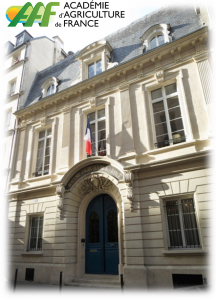
07/27/2016
According to main objectives, under the leadership of the Academy, agricultural scientists have been treated and resolved many of the problems and issues that are now successfully used in agriculture;
More than 100 new species of agricultural crops and livestock are created in Georgia,furthermore,
dozens of new competitive products of food and processing industries, as well as resource saving technologies and technical equipment for annual and perennial crops are developed.
Up to 50 new machinery and technical equipment for tea growing, harvesting and processing are created in Georgia. On the above mentioned more than 300 author’s certificates and patents are received.
It should also be noted that 23 of the world’s wheat varieties Georgia 14 species habitat, as does viticulture, horticulture (the vine, fruit varieties) and others., Which have no analogue in the world can be.
Academy of Science – based on research conducted by research institutions, annually sets used in the agricultural sector recommendations.
Academy member and cooperates with 20 – to international organizations. He is actively involved in international projects, conferences, meetings, trainings and more. Has expanded cooperation with foreign scientific centers. Academy members attended and speeches by the United States – in Italy, Bulgaria, Czech Republic, Spain, Portugal, Russia, Ukraine, Azerbaijan, Turkey, France, Jordan and other countries in the organized international symposia, conferences and exhibitions. The papers published in international editions of the speakers at the event (“iakrda”, “Pao”, bioversiti “and others.).
Academy of Agricultural Sciences, and a member of the Academy – the correspondents, and only last year, a total of 385 have been published – more than 35 scientific papers and they took part in – of various scientific board (conference, seminar, meeting); Academy strongly held round tables and workshops in various areas of rural areas.
Several members of the Academy are elected as a member of the International Academy, many of them are grouped by various international scientific and sectoral organizations.
A full member of the Academy for three years under the “best science” rank, two – “Best Engineer”, while five of the State Prize in the field of science and technology. In 2013, four members of the Academy have been given the agrarian sector of the “best science” honorary title.
Moreover, in recent years, the Georgian Academy of Agricultural Sciences, was conducted by a number of other important works, the results of which the State is a solid basis for it to be successfully realized in modern achievements of agricultural science in practice.
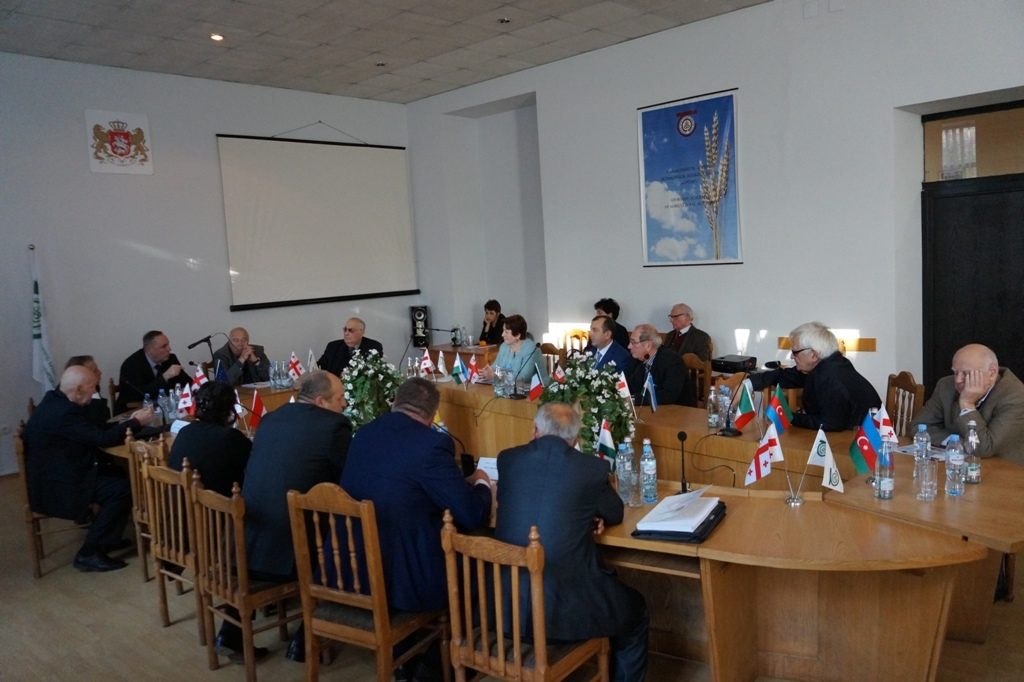
The government of the Grand Duchy of Lorraine quickly granted the Accademia official recognition as a Public Institution (the first of its kind in the world), and entrusted it with many important tasks.
The motto of the Accademia Prosperitati publicae augendae (to increase the wealth of the State) highlights how the activities of the Georgofili have always been in the Public interest.
The activities, the study and the research of the Georgofili were always very articulate during the first century of its foundation, and were closely associated with the Reforms of Leopold. In the light of scientific and technological progress, the commitment of the Accademia in the field of education (with the schools for “Reciprocal Instruction” as well as the Istituto di Meleto), in addition to the enormous work done in the fields of agriculture, spread by the “Acts” and by the “Giornale agrario toscano” (the Tuscan Agricultural Journal), constituted the main elements for the formation and training of a new agricultural class. Since the 1791, in order to stimulate and spread knowledge about better techniques, the Georgofili decided to publish their “efforts no longer in form of separate pamphlets but in series, as done by the most famous Societies in Europe”. From the very beginning, Georgofili expressed the intention of preserving pages and documents and putting them at the disposal of who so ever wishes to consult them.
At the beginning of the 19th century, the fame and authority of the Accademia were such as to induce Napoleon himself to commission the study of the project on the reform of the French Rural Codex.
With the unification of Italy, the Accademia dei Georgofili, which was already renowned beyond the confines of Tuscany, also assumed a national dimension. In 1897 it became recognized as a State Institution.
Some of the most important activities undertaken by the Accademia during the 20th century offer an important overview of the rapid scientific and technological progress wich characterize the century.
The Georgofili, ever-faithful to their historical role, continued to look towards the future and to turn their attention and commitment, but this time using updated technology, to the scientific, technical, economic and social problems which have spurred the evolution of the world of agriculture and have highlighted the new emergencies linked to the protection of the environment.
The Accademia has entrusted to its own Acts the task of spreading knowledge and maintaining its research patrimony, as well as the experimentation and innovation promoted by Georgofili, not only in the field of agriculture, but also in areas related to civilization, politics and economics.
At present, the Library has a total of approximately 90.000 volumes include monographs, leaflets and periodicals; there are two incunabulum and 115 books from the 16th century. The Library has both a hard copy catalogue and one that can be consulted on line.
The Historical Archives of the Georgofili, dating from 1753 (the year of its foundation) to 1911, preserve in excess of some 12.000 hand-written documents. In addition to the memoires sent to the Accademia and exhibited during the Public Assemblies, there are also letters, essays and documentation related to the opinions requested on the most diverse topics. The printed Inventory of the Archives was published in Florence in 1970-1977. The modern section of the Historical Archives contains all the correspondence, the minutes of the meetings, the memoires and the acts produced by the Accademia during the first half of the 20th century (approximately 15.000 documents). The Accademia dei Georgofili has also a Photographic Archives, an important collection specialized in topics relating to agriculture, which contains approximately 110.000 photographs (colour, as well as black and white) slides, negatives, drawings, etc.
06/30/2016
The Academy is implementing collaboration agreements with 26 foreign academies and other research centres; together with its partners, it carries out projects financed by the EU Structural Funds important for Lithuania’s R&D. The LAS is the founder of the Wróblewski Library; it publishes research proceedings, academic journals, and informational publications. The Academy often plays host to national and international conferences, seminars by foreign scientists, scientists’ meetings, academic readings, and exhibitions. On the assignment of the Government, the LAS organizes the activities of the Lithuanian Commission for Science Prizes; it has established 18 commemorative science prizes; it encourages young scientists and students to engage in scientific research by awarding each year 10 prizes to young scientists and 15 prizes to university students. Since 2010, the Academy has been giving 15 annual grants to young researchers.
According to its Charter, the LAS has the right to elect 120 full members (under 75 years of age) by open competition. The number of emeriti (over 75 years of age) and foreign members is not limited.
The Division of Agricultural and Forestry Sciences
In 1991, an independent Section of Agricultural Sciences was set up in the Division of Biology, Medicine and Agriculture, and in 1995 it was reorganized into the Division of Agricultural and Forestry Sciences. For two terms, the newly founded Division was chaired by Veronika Vasiliauskienė. Its activities are conducted in 5 sections and 4 commissions.
The Division has always been concerned about increasing the role of agricultural and forestry sciences in the solution of scientific and economic problems in this country. It initiated the establishment of the Nemunas Science, Studies and Business Centre (Valley). The members of the Division have carried out important research in many spheres: Leonardas Kairiūkštis has given a theoretical substantiation of stand productivity; Stasys Karazija has originated Lithuanian forest typology; Remigijus Ozolinčius has started forest condition assessment; and Algirdas Sliesaravičius has undertaken plant biotechnology studies. The following scientific schools and trends have been created: grassland husbandry – Leonas Kadžiulis; plant pathology – Mindaugas Strukčinskas; genetics and biotechnology, later oil-bearing plant biotechnology – Algirdas Sliesaravičius; plant protection – Zenonas Dabkevičius; original orchard plant genetics and biotechnology – Vidmantas Stanys; theoretical basis of livestock productivity – Česlovas Jukna; research into the use of enzymes in animal and poultry nutrition – Vytautas Konstantinas Sirvydis; improving livestock reproduction properties – Henrikas Žilinskas, soil science – Algirdas Juozas Motuzas, energy and material exchange processes in biotechnology – Algirdas Jonas Raila, plant physiology – Pavelas Duchovskis, water management – Arvydas Povilaitis, food technology – Pranas Viškelis, agriculture and forest plant breeding – Vytautas Ruzgas and Darius Danusevičius.
The first State scientific project “The Ecological Sustainability of Regional Development” (ECOSLIT) was implemented and the monograph “Lithuania’s Ecological Sustainability in the Historical Context” was published under the supervision of Leonardas Kairiūkštis. It was followed by other important studies: “Lithuania’s Soils”, “Biotechnology of Agricultural Plants”, “Plant Product Stationary Drying of Thick Layers”, and “Dictionary of Agricultural Terms for Plant Breeding and Seed Production”.
For their outstanding scientific achievements Vidmantas Stanys, Algirdas Sliesaravičius, Leonardas Kairiūkštis, Remigijus Ozolinčius, Zenonas Dabkevičius, Darius Danusevičius, Alfas Pliūra, Vytautas Ruzgas were awarded the National Science Prizes. Leonardas Kairiūkštis’s valuable contribution to the European forestry earned him the international Wilhelm Leopold Pfeil Prize. Four members of division: Leonardas Kairiūkštis, Albinas Kusta, Henrikas Žilinskas and Zenonas Dabkevičius are the Foreign fellows of the Royal Swedish Academy of Agriculture and Forestry.
Some members of the Division used to hold or hold now important posts at scientific, educational and other institutions. Zenonas Dabkevičius is the Director of the Centre of Agrarian and Forestry Sciences; Henrikas Žilinskas is the Chancellor of the Veterinary Academy and Antanas Sederavičius – the Vice-Rector of the Lithuanian University of Health Sciences. Leonas Kadžiulis was appointed the Minister without portfolio and the Chairman of the Science Council of Lithuania. Antanas Kairys was elected to the Seimas (Parliament) of the Republic of Lithuania; Vidmantas Bižokas was the Rector of the Lithuanian Veterinary Academy, and Albinas Kusta served as the Rector of the Lithuanian University of Agriculture, Remigijus Ozolinčius was the Director of the Lithuanian Forest Research Institute.
09/23/2016
The Academy of Sciences develops its activity according to the provisions of the Constitution of the Republic of Moldova, the Code on Science and Innovation, the Partnership Agreement with the Government of the country, its Statute and other legislative and normative documents.
The Assembly of the Academy of Sciences is the supreme leadership body of the Academy of Sciences, constituted of Titular Members (Academicians), Corresponding Members and 78 Doctors Habilitat, elected for a period of 4 years by the meetings of Doctors Habilitat and Doctors of Science of the Sections of Sciences.
The Supreme Council for Science and Technological Development is the executive body of the Assembly and is constituted of 17 persons: the President, Vice-Presidents and the General Scientific Secretary of the Academy of Sciences, Academicians-Coordinators of the Sections of Sciences (appointed from the office) and 6 representatives of the scientific community, including higher education institutes and the State Agency for Intellectual Property, elected by the Assembly for a period of 4 years.
The General Meeting of Titular Members and Corresponding Members represents the highest forum of the academic personnel (Titular Members, Corresponding Members and Honorary Members), composed of the most notorious representatives of the academic, university and branch science.
A special attention is paid to the extension and improvement of the relations of collaboration with local universities, profile ministries and departments, respective agreements being concluded and the forms of cooperation being diversified.
One of the strategic priorities of the A.S.M. activity is the development and consolidation of scientific international relations, maintenance of bilateral relations with the Academy of Sciences and scientific organizations from many countries, agreements of scientific collaboration being concluded and actions of integration in the European scientific sphere and in world scientific community being promoted.
09/23/2016
09/27/2016
Bioforsk’s objective is to provide industries, governments and consumers with new knowledge, services and solutions within these scientific fields. International collaboration is given high priority.
09/27/2016
As a community of scientists, the Academy is structured into a set of Divisions, Territorial Branches, scientific and task-force committees, a Polish Young Academy that promotes the research and development work of outstanding young scientists, a Committee for Ethics in Science, and an Audit Committee that oversees the financial and economic activity of the Academy. The affairs of these various Academy-level institutions are the responsibility of the Deans of the Divisions, whereas the research units themselves are overseen by the chair and deputy chair of the Council of Provosts of each Division.
09/29/2016
A.A.F.S. is a public, independent, legal, apolitical institution, promoting the fundamental and applicative research in the field of water and soil management, land reclamation, plant cultivation and animal breeding, aquaculture, veterinary medicine, food industry, agricultural mechanization, agrarian economics, rural development, forestry and environment protection.
A.A.F.S. was founded in its current form in 1969, having institutional roots since 1927, as the legal successor of the Agronomic Research Institute of Romania (following a range of older institutional organizations) and leads a research network of 75 public and private R&D units placed in different representative ecological locations of the country.
According to the Statute, A.A.F.S. has a maximum number of 181 full and corresponding members, 40 Romanian honorary members, 90 foreign honorary members and at most 90 associated members with remarkable merits in the progress of agriculture sciences and practice.
09/23/2016
In 2013, a reorganization of the academic system was carried out. According to the Charter, laid down in 2014, the Russian Academy of Medical Sciences as well as the Russian Academy of Agricultural Sciences were integrated with the Russian Academy of Sciences. At the present time the Academy includes 948 Academicians, 1206 Corresponding Members and over 400 International Members. In accordance with the Charter, the Russian Academy of Sciences carries out the scientific and organisational direction of thousands of scientific staff, working in hundreds of academic scientific organisations – institutes, scientific centres, observatories, research stations, botanical gardens, libraries, archives, museums and nature reserves. The Russian Academy of Sciences has been appointed the main expert on all important governmental decisions. The Russian Academy of Sciences is a legal body: a federal state budgetary scientific institution, a non-profit organisation.
The structure of the Russian Academy of Sciences is made up of departments in various areas and branches of science (RAS Departments), Regional Departments of the Russian Academy of Sciences and Regional Scientific Centres of the Russian Academy of Sciences.
The Department of Agricultural Sciences of the Russian Academy of Sciences carries out fundamental and practical research in 255 scientific institutions and 100 experimental facilities, enterprises and manufacturers, it includes 151 Academicians, 127 Corresponding Members and 160 International Members.
09/23/2016
The main goal of the Academy is to incite and direct fundamental, developmental and innovative research and other forms of scientific and specialist creativity within the engineering production and design, to direct and incite the system of engineering education and knowledge dissemination in all areas of engineering.
The Academy of Engineering Sciences of Serbia was established in 1998 in Belgrade under the name of Engineering Academy of Yugoslavia. Following the changes in society, it obtained and officially registered its current name in October 2006.
At this moment (2016) the Academy of Engineering Sciences of Serbia has 119 full members, 77 corresponding members and 7 honorary members-distinguished engineers, as well as 69 foreign members. All members of the Academy were elected according to high scientific and technical quality standards, by secret vote at the Academy Assembly.
Academy performs its activities through Departments that are principal for the basic groups of scientific and engineering disciplines.
Interdepartmental committees are formed for the multidisciplinary character matter. Departmental committees are organized for more important areas of departmental activities within one department.
09/27/2016
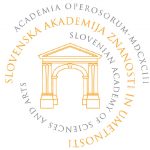


SASA cultivates, encourages and promote sciences and arts, through its activities, contributes to the development of scientific thought and creativity in the arts, particularly by:
•addressing basic issues of sciences and arts;
•participating in establishing the policies of research activities and creativity in arts;
•giving appraisals, proposals and opinions on the position, development and promotion of sciences and arts, and on the organization of research activities and creativity in the arts;
•organizing research work, also in cooperation with universities and other research institutions, particularly in the fields which are important for the awareness of and gaining insight into the natural and cultural heritage of the Slovenian nation and for the development of its language and culture, and
•developing international cooperation in the field of sciences and arts.
Innovation for Agriculture (IfA) is a consortium of 15 English Agricultural Societies
Through the creation of technical centres around England, IfA delivers new science and innovation to farmers via its website, publications, conferences, seminars, workshops, on farm demonstrations and new media.
Through the strong consortium of Agricultural Societies, the initiative is prioritising in the following areas:
Precision Livestock and Animal Health and Welfare
Soil and Water
Renewable Energy
09/23/2016
The National Academy of Agrarian Sciences of Ukraine started its activity as Ukrainian Academy of Agricultural Science on 22 May 1931 (from December 1990 – Ukrainian Academy of Agricultural Sciences). The current status is valid from 6 January 2010 under the Decree of the President of Ukraine № 8/2010 «On granting the Ukrainian Academy of Agrarian Sciences national status»
The Academy is state scientific organization based on state ownership and uses the rights of self-government body that resides in collegial governance and its selectivity, self-determination of its structure and themes of research, solution of scientific, organizational and personnel issues, economic activities and implementation of international scientific communication grounding on the laws of Ukraine.
09/23/2016
